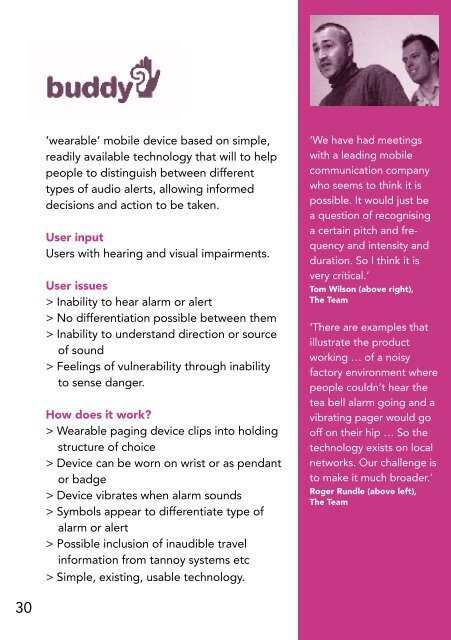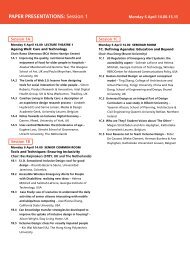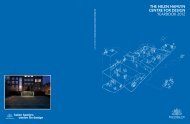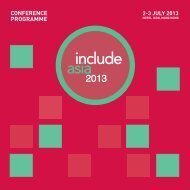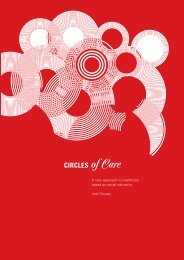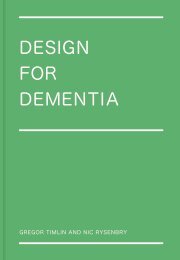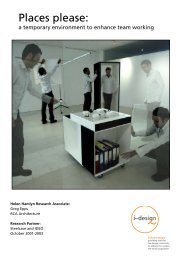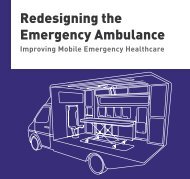innovate 6 - Helen Hamlyn Centre - Royal College of Art
innovate 6 - Helen Hamlyn Centre - Royal College of Art
innovate 6 - Helen Hamlyn Centre - Royal College of Art
- No tags were found...
Create successful ePaper yourself
Turn your PDF publications into a flip-book with our unique Google optimized e-Paper software.
‘wearable’ mobile device based on simple,readily available technology that will to helppeople to distinguish between differenttypes <strong>of</strong> audio alerts, allowing informeddecisions and action to be taken.User inputUsers with hearing and visual impairments.User issues> Inability to hear alarm or alert> No differentiation possible between them> Inability to understand direction or source<strong>of</strong> sound> Feelings <strong>of</strong> vulnerability through inabilityto sense danger.How does it work?> Wearable paging device clips into holdingstructure <strong>of</strong> choice> Device can be worn on wrist or as pendantor badge> Device vibrates when alarm sounds> Symbols appear to differentiate type <strong>of</strong>alarm or alert> Possible inclusion <strong>of</strong> inaudible travelinformation from tannoy systems etc> Simple, existing, usable technology.‘We have had meetingswith a leading mobilecommunication companywho seems to think it ispossible. It would just bea question <strong>of</strong> recognisinga certain pitch and frequencyand intensity andduration. So I think it isvery critical.’Tom Wilson (above right),The Team‘There are examples thatillustrate the productworking … <strong>of</strong> a noisyfactory environment wherepeople couldn’t hear thetea bell alarm going and avibrating pager would go<strong>of</strong>f on their hip … So thetechnology exists on localnetworks. Our challenge isto make it much broader.’Roger Rundle (above left),The Team30


